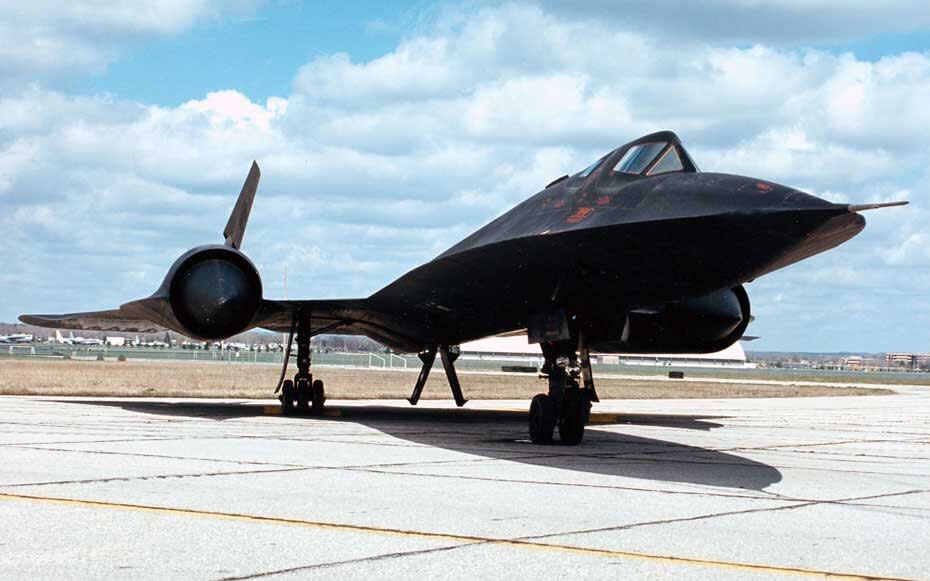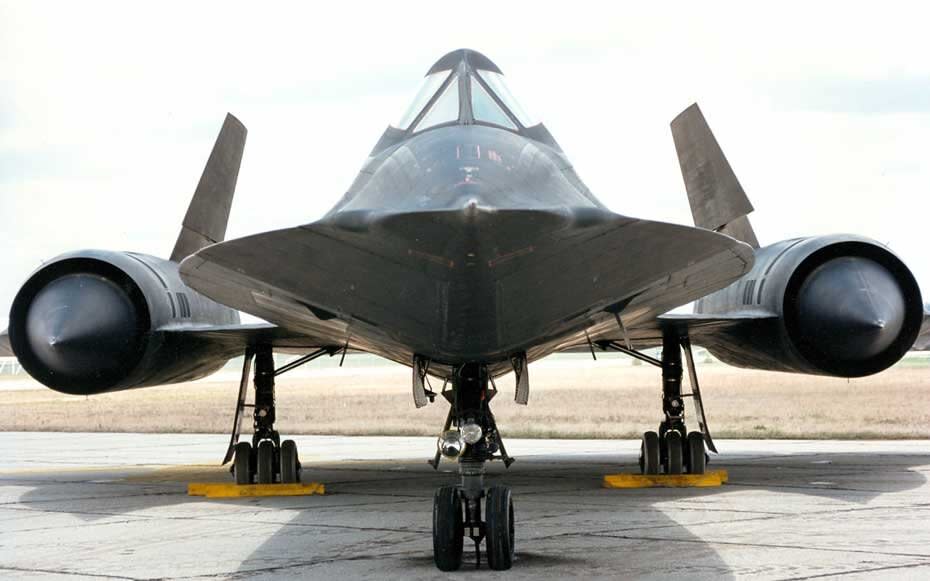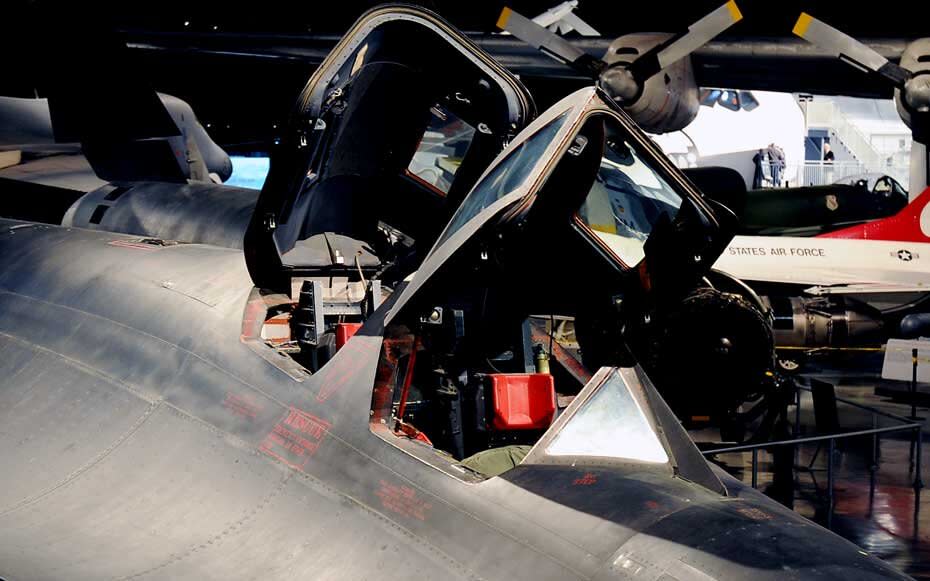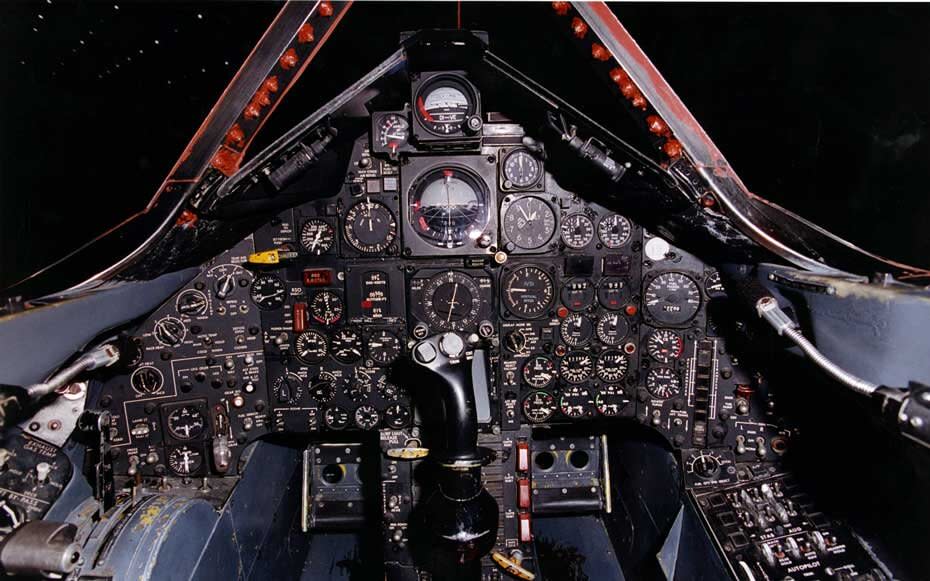25 surprising facts about the SF-71 Blackbird

Courtesy of U.S. Air Force
Bond wishes he had a bird like this.
The SR-71 was a spy plane born to rule the skies and is one of the greatest feats of engineering ever to take off. The Blackbird is native to California, hatched at Lockheed Martin's Skunk Works, which has a hard-earned reputation for making the impossible happen.
While Blackbirds now only grace museums in the U.S. and U.K., in over two decades of active duty they had two careers supporting espionage and science.
The Blackbird program was an enigma, an impossibility, and ultimately a controversy, but even in retirement these are still among the world's sexiest jets.

Courtesy of U.S. Air Force
Even if you think you know all of the Blackbird's secrets, a good spy always holds something back. Here are some details which might surprise you.
1. Blackbirds can fly at altitudes higher than 85,000 feet and at speeds exceeding three times the speed of sound (up to Mach 3.3). That's more than 2,000 miles per hour.
2. These jets were equipped with a variety of sensors suited to each intelligence run, specialized framing cameras producing detailed black and white images that captured objects as small as nine inches in diameter, and a high-resolution radar imaging system which could work day or night regardless of the weather. A Blackbird could photograph 100,000 square miles in an hour.
3. For the Blackbird, record speeds weren't good enough. They needed stamina to sustain high speed at altitude for hours at a time. This called for new materials that could withstand heat from friction as intense as 1,000 degrees Fahrenheit, while flying in an environment of-60 degrees Fahrenheit.

Courtesy of U.S. Air Force
4. The Blackbird got its name because it needed to keep cool under pressure. Skunk Works applied black paint because it is an optimum temperature regulator, and enhanced that paint with an element which made it virtually invisible to radar.
5. Soviet radar advances, meant the design of Blackbirds had to be optimized to prevent detection. Skunk Works redesigned surfaces and moved the engines to a mid-wing position in an effort to lower the Blackbird's profile. When they were done, they'd reduced the radar cross section of this 110-foot-long plane by 90 percent.
6. Titanium alloy was the only metal suited to the Blackbird's frame because it is strong and durable, but relatively light. Skunk Works soon discovered it was a tricky material to work with. When it came into contact with cadmium-plated steel tools in the production line, Titanium became brittle and was prone to shattering. Lockheed had to develop new titanium tools to build these planes, and arranged special training courses for Blackbird machinists.
7. Blackbirds were powered by Pratt and Whitney J58 axial turbojets—the world's first adaptive engines, according to the manufacturer—able to cope with the demands of sustained flight above Mach 3.
8. Each jet produced 32,500 lb of thrust. But less than 20 percent of the thrust the Blackbird needed to fly Mach 3 came from the engines. The balance was produced by air passing through engine inlet and the conical spike at the front of each engine's nacelle.

Courtesy of U.S. Air Force
9. J58s engines produce a blue-yellow-orange flame 50 feet long, marked by a series of shock patterns in the stream, which can make the plane look like it's spitting fire balls.
10. Pratt and Whitney originally developed the engine in 1958.
11. The Blackbird's design dates back to the late 1950s, but its existence remained classified until 1976.
12. The phrase "shaken not stirred" might well apply to the Blackbird's choice of tipple. The JP-7 fuel used to power Blackbirds was also a custom job, developed by Shell Oil. The jets needed fuel of low volatility, to absorb the heat produced in operation. Blackbirds were thirsty for this "water-white, clean and bright" beverage, holding 12,000 gallons.
13. The flashpoint of JP-7 (the temperature at which it ignites) was so high that a folk legend developed at Skunk Works that a match dropped in fuel by one of the workers was instantly extinguished. This may be a fish tale—what sort of person tosses a match into a bucket of jet fuel? But according to the Smithsonian Air and Space Museum, this tall tale is technically valid. Low volatility fuel needs far more than a match to burn.
14. Ignition of JP-7 resulted from a chemical reaction with Triethylborane (TEB), which burns spontaneously when exposed to air.
15. The Blackbird's baby brother, the smaller A-12, was first to fly in April 1962.
16. The Cuban Missile Crisis urged the program forward. The downing of a U-2 reconnaissance mission over Cuba in October 1962, put the Blackbird program into overdrive. By July 1963, the Blackbird had proven its capabilities by flying Mach 3 at 78,000 feet. The SR-71's first flight was on Dec. 22, 1964.
17. The high costs of operating and maintaining this specialized fleet—and the imminent end of the Cold War—led the Air Force to retire the Blackbirds in 1990. But not everyone agreed. Members of the Senate Select Committee on Intelligence wanted to keep the Blackbirds in the skies. Congress brought three of the jets back into service between 1995 and 1998.
18. From 1990 to 1997, NASA capitalized on the capabilities of four SR-71 Blackbirds to support aeronautical research.
19. The Blackbird served NASA in the interest of better sky-gazing. An upward-gazing ultraviolet video camera helped track celestial objects in wavelengths blocked by Earth's atmosphere, and invisible to ground-based astronomers.
20. NASA also used the Blackbird in an attempt to save the planet, with a research program focused on protecting and rebuilding the ozone layer.
21. You can thank the NASA Blackbird program, at least in part, for your smartphone. The SR-71 supported the development of Motorola's IRIDIUM Satellite Communications program, serving as a quickly moveable satellite to test transmitters and receivers on the ground.
22. NASA's SR-71 aeronautics program contributed to improvements in passenger aircraft, and examined the dynamics of turbulence.
23. The NASA SR-71 program might also lead to a better supersonic passenger flying experience in the future. NASA used Blackbirds to research the thunderclaps produced by breaking the sound barrier. This research helps inform its new QueSST 'heartbeat' quiet supersonic plane project.
24. Perhaps this is no surprise, but the pilots who flew the Blackbird loved it. A lot.
25. But pilots couldn't fly these spy planes wearing black tie. Instead, they wore special pressurized suits and helmets similar to astronaut gear. Hoses at the back of the helmet connected to a supply of 100 percent oxygen. Pure oxygen protected pilots suffering decompression sickness (what divers call "the bends") at high altitudes.

